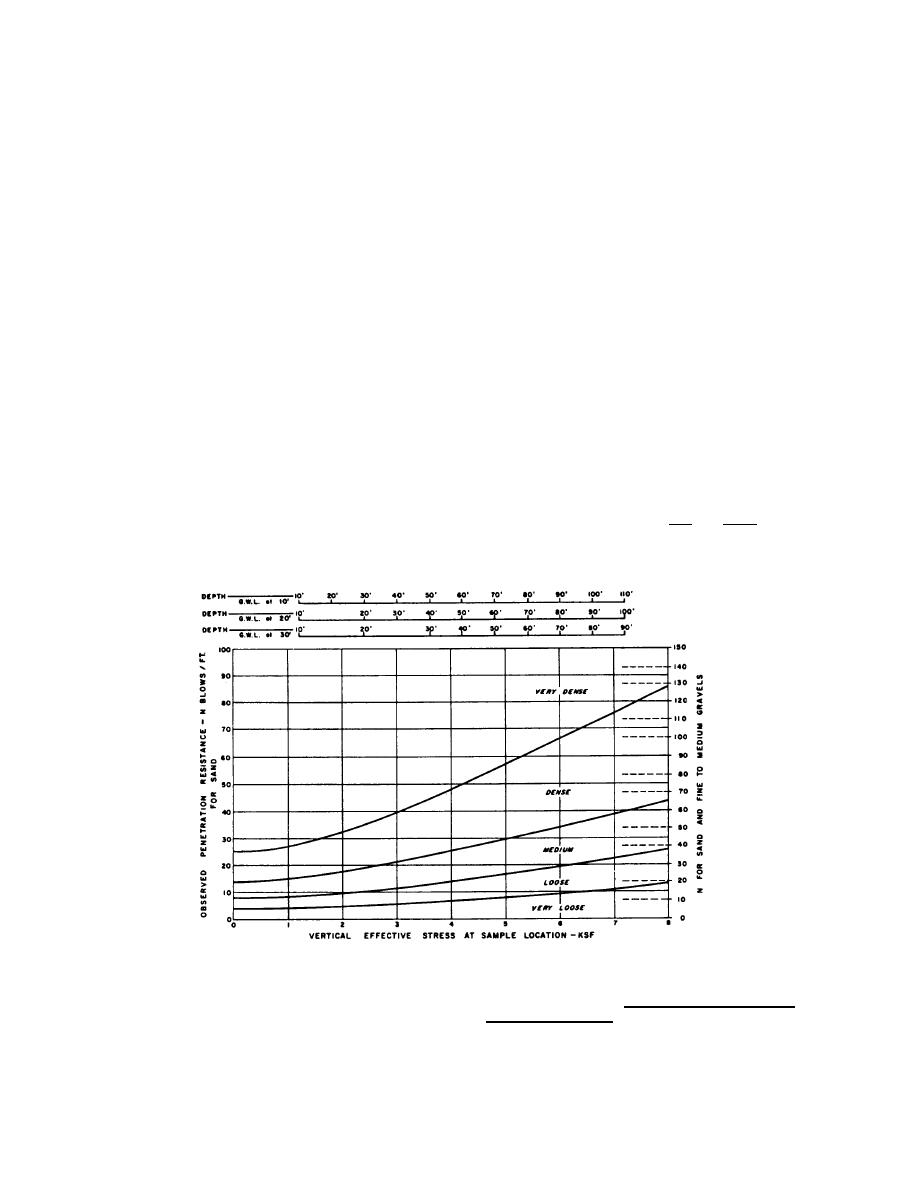
TM 5-818-1 / AFM 88-3, Chap.7
drive sampler should be not less than 2 inches, and
density for cohesionless soils is shown in figure 4-1, and
with φ in figure 4-2; but φ values above 35 degrees
preferably 3 inches or more in diameter. Where loose
sands or soft silts are encountered, a special sampler
should not be used for design on the basis of these
with a flap valve or a plunger is usually required to hold
correlations. There is no unique relationship between N-
the material in the barrel. A bailer can be used to obtain
values and relative density (DR) that is valid for all
sands and gravel samples from below the water table.
sands. The SPT data should be correlated with tests on
Split-spoon samples should be used to obtain
undisturbed samples on large projects.
representative samples in all cases where piles are to be
driven or the density of cohesionless materials must be
b. Cone penetration tests. In this test, a cone-
estimated.
shaped penetrometer is pushed into the soil at a slow
constant rate; the pressure required to advance the cone
4-3.
Field measurements of relative density and
is termed the penetration resistance. The Dutch cone is
consistency.
the most popular. The penetration resistance had been
correlated with relative density of sands and undrained
a. Standard Penetration Test (SPT). This test
shear strength of clays.
c. Vane tests. The in situ shear strength of
is of practical importance as it provides a rough
approximation of the relative density or consistency of
soft to medium clays can be measured by pushing a
foundation soils and should always be made when piles
small four-blade vane, attached to the end of a rod, into
are to be driven. The split spoon is usually driven a total
the soil and measuring the maximum torque necessary
of 18 inches; the penetration resistance is based on the
to start rotation (shearing of a cylinder of soil of
last 12 inches-the first 6 inches being to seat the sampler
approximately the dimensions of the vane blades). The
in undisturbed soil at the bottom of the boring. "Refusal"
undrained shear strength, su, is computed from this
is usually taken at a blow count of 50 per 6 inches.
torque, T, as follows:
(Commercial firms will usually charge an increased price
suΠ
2
3
(
per foot of boring when the blow count (N-value) ranges
)
T
=
dh +
d
(4-4)
from greater than 50 to 60 blows per foot of penetration
2
4
due both to reduced daily footage of drilling and wear of
equipment.) An approximate correlation of results with
(Courtesy of the American Society of Civil Engineers . "Task
Committee for Foundation Design Manual of the Committee on
Shallow Foundations " Journal, Soil Mechanics and
Foundations Division , No. SM6. 1972.)
Figure 4-1. Relative density of sand from the standard penetration test.
4-5


 Previous Page
Previous Page
